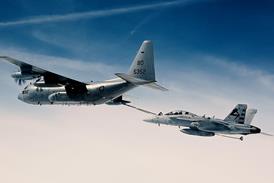Fokker Services is hoping to convert, by the end of April, letters of intent held for its F28RE re-engineing programme to firm contracts, to enable full scale development to be launched.
The company had been aiming for a launch during the course of last year and selected the Rolls-Royce Tay 620 last April to power the aircraft.
Since then, it has been working to achieve its minimum required launch conditions - firm orders from two airlines for at least 25 aircraft. Fokker Services F28RE programme manager Lawrence Opbroek says that commitments held already surpass that order target, but he adds that launch is dependent upon the firming up of these agreements. Australia's Flight West Airlines, which operates three ex-Ansett F28 Mk4000s, is believed to be one potential launch customer.
"We expect to sign up sufficient firm orders during April to enable us to launch the development programme, begin to manufacture tooling and place orders for components in July," says Opbroek.
"We have various timetable scenarios, but assuming that the April target is met, we could begin testing a prototype aircraft in mid-1999 and deliver the first aircraft by mid-2000," he adds.
Since the engine selection, details of the conversion have been refined. The forward fuselage plug, required to counterbalance the weight of the new Tays (and installation structure) which replace the smaller, lighter R-R Spey Mk555s, has been decreased by around 200mm, to 940mm. The plug also allows an extra five seat row to be installed in the aircraft.
Fokker Services has also decided not to install thrust reversers on the Tays, as any performance advantage is offset by the additional complexity, although this will require the development of a modified nacelle, which is supplied by Northrop Grumman.
Opbroek declines to specify the price for the conversion, saying only that it is "less than $10 million". This includes engines, but excludes optional flightdeck upgrades or cabin refurbishment. He says that interest in the programme has come from potential customers worldwide, divided fairly evenly between the short fuselage Mk1000/3000 and stretched Mk2000/4000 models.
Source: Flight International























